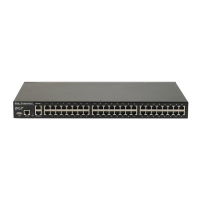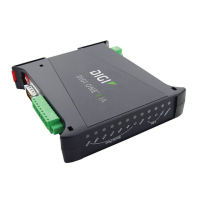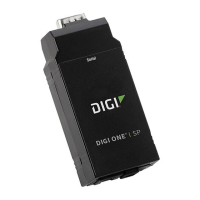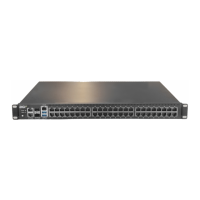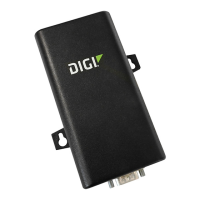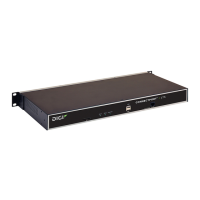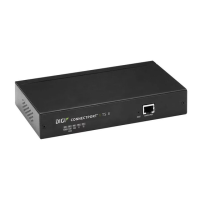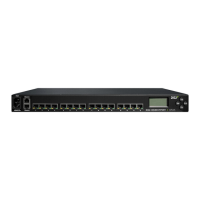Page 84 Configuring Terminals 90030500B
Setting Up a Terminal
The following procedure assumes that you have connected the terminal that you wish
to configure to PortServer II, following the procedures in
Chapter 3, Installation
. If
the terminal is connected to PortServer II via a modem or a network, use the appropri-
ate procedure from Chapters 8 through 10.
1. Check that there is an administrative terminal or PC connected to one of the serial
ports, as described in
Chapter 3 Installation
. If you do not have a terminal or PC
connected, connect one now. Alternatively, you can telnet into PortServer II from
another machine connected to the Ethernet.
2. Log into the PortServer II as
root
, as described in
Chapter 4, Basic Configura-
tion
.
3. Set the terminal type for the port that your terminal is connected to, using the fol-
lowing command:
set ports termtype [options]
The options specify the type of terminal that you have connected. For example, if
your terminal is a Wyse 60 connected to Port 2, enter:
#>set port termtype=wy60 range=2
The terminal type name (
termtype
) depends on the conventions accepted by
operating systems on your network hosts; refer to your host documentation for
more details.
The
range=2
parameter tells the PortServer II software that this command is to
affect Port 2. If you do not specify the range, the port that the administrative ter-
minal is connected to is changed to Wyse 60 operation.
Note:
You can specify other options in the
set ports
command in addition
to the terminal type, including automatic connection when the user logs
in, time delays between packets sent to the user, groups of like devices,
and the maximum number of sessions available to the user. For detailed
information, refer to
set ports
in the
Command Reference Guide
.
Take particular note of the
save
option that determines whether your
changes are save permanently in PortServer II’s memory.
4. Set the baud rate and operational parameters of the port that the terminal is con-
nected to using the following command:
set line [options]
